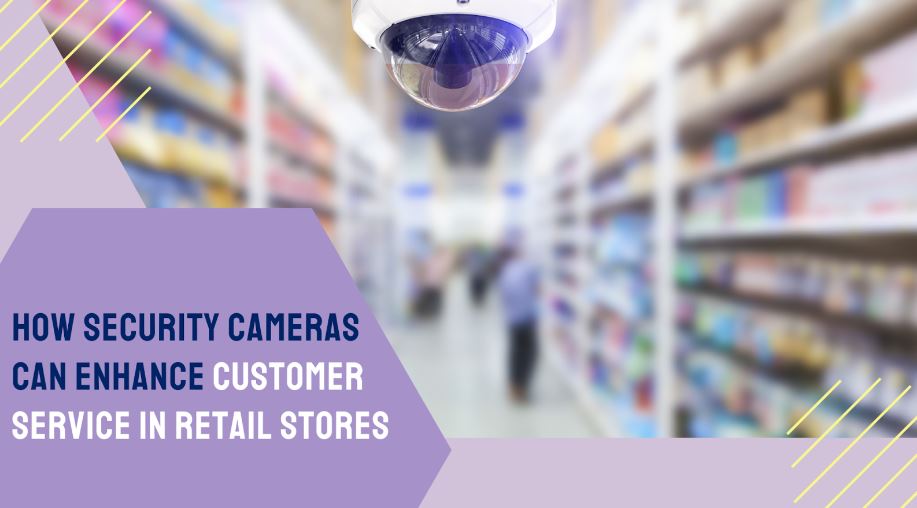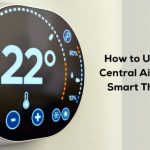Have you ever wondered about the purpose of those security cameras in stores? You might think they just catch shoplifters. Smart video surveillance, however, can enhance the shopping experience!
Stores are projected to spend over $10 billion on security cameras this year. A major reason is that high-tech systems provide many customer benefits beyond security. Read on to learn how better service can be achieved thanks to those watchful cameras overhead.
The Evolving Role of Security Cameras in Retail
Retail security cameras serve a broader purpose beyond theft prevention. Smart cameras with artificial intelligence let retailers improve customer experiences.
As the global retail store security camera market surpasses $10 billion, driven by the increasing use of AI and advanced analytics, retailers now have very powerful tools to enhance the shopping experience. Let’s explore some key features.
Preventing Theft and Increasing Safety
While stopping theft is still important, security cameras now also directly improve consumer safety. High-resolution video feeds and intelligent image analysis can instantly spot accidents, spills, suspicious packages, and other hazards. This allows retailers to quickly respond to safety issues and prevent customer injury.
Smart real-time alert systems also prevent crime and reduce shoplifting, helping retailers create a safe and welcoming shopping environment that is vital for positive experiences.
Remote Store Management and Optimization
Networked cloud cameras enable cost-effective remote management of multiple stores without the need for expensive visits. Head office teams can visually check product displays and layouts and give store managers feedback on improving operations based on real consumer interactions.
Centralized intelligent video analysis also generates customer traffic heatmaps, time spent in-store metrics, and line length analysis, offering detailed insights to address issues and enhance store layouts, inventory planning, and all aspects contributing to improved customer experiences.
Enhancing Service Quality with Smart Video Surveillance
While safety and theft prevention form the basic foundation, smart video analytics also enables directly improving customer service quality in various ways when optimally used. Look at the data below that shows the
Data Source: RetailVision
Let’s explore some impactful examples:
Fast Complaint Resolution
Positively and promptly resolving customer complaints is vital for maintaining consumer trust and loyalty, especially given the amplification from social media reviews. Smart video surveillance system allow retailers to visually confirm reports of damaged products, messy stores, disorganized shelves, missing items, and other problems.
The high-resolution video evidence gives impartial input for store managers to appropriately resolve complaints. It also improves staff accountability across roles. This leads to much higher consumer satisfaction from proper complaint resolution.
Coaching Employees
In-store and curbside camera footage is invaluable for coaching employees to better serve customers. Heatmaps displaying long lines can be connected to employee levels in each department to guide scheduling.
Additionally, video clips can easily identify problems in employee interactions with shoppers, product suggestions given, overlooked merchandising issues, etc. Store leaders can make very focused coaching and training programs to fix common issues seen in unbiased videos. This significantly enhances various aspects of customer service quality across all staff roles.
Confirming and Resolving Customer Issues
Positively resolving complaints is vital for keeping customers, especially with amplification from social media. Smart video surveillance lets retailers visually confirm reports of damaged products, messy stores, or other customer issues. The video evidence provides impartial input to appropriately resolve complaints and improves consumer trust and satisfaction.
Monitoring Staff Conduct
In-store surveillance footage is invaluable for coaching employees towards better customer service. Video segments can identify shortcomings in employee interactions, recommendations, and merchandising. Constructive feedback and training guided by unbiased video observations significantly improve customer service quality.
Tracking In-Store Behavior with Video Analytics
Sophisticated video analytics reveals subtle insights about consumer interactions unavailable otherwise. Retailers can use these trends to craft tailored shopper experiences that directly improve customer service.
Optimizing Store Layouts
Heatmaps of in-store customer journeys from video tracking show actual traffic flow patterns unaffected by human perception biases. Retailers can analyze the heatmap data along with sales metrics to optimize merchandise placement and store layouts based on real observed shopping behavior.
Improving Merchandise Displays
Analytics from surveillance cameras also offer insights into conversion rates for specific product displays. Retailers can accurately evaluate the real-world effectiveness of various display layouts and highlight the highest-converting arrangements. Optimized displays directly enhance both the shopping experience and retail outcomes.
Enhancing Inventory Planning
Camera-driven customer traffic analytics provides accurate shopper demographics information, including breakdowns by key segments like gender and age groups. Combined with sales data, this enables superior inventory planning tailored to local shopper profiles, directly benefiting customers through optimal product availability.
Retail Video Analytics Success Stories
Global retailers using smart video analytics have seen major customer service improvements from data-driven optimization. Look at the data below that shows the
Better Store Layouts and Sales
A major North American retailer saw 4.2% more sales after using video analytics to optimize store layouts and product placement based on real consumer behaviors. The video heatmaps showed accurate real shopping patterns not affected by human bias.
Fixing Issues and Improving Service
The camera system implemented in a leading luxury retail chain in the Middle East has improved customer service. The high-resolution video promptly confirms and resolves customer complaints and damage claims through visual verification. The retailer also uses analytics to identify issues and coach employees to better serve shoppers.
FAQs on Retail Video Analytics
1. What are some limitations of camera analytics?
While valuable, video analytics have some limitations. Distortions from camera angles can distort heat maps. Low light also reduces accuracy. Combining video insights with complementary sensor data provides the most complete customer behavior insights.
2. Do security cameras violate consumer privacy?
Modern video analytics systems analyze overall behaviors and trends, rather than identifying individuals. Responsible retailers using aggregated anonymous data analytics adhere to local privacy rules. Surveillance policies are clearly told to customers in stores.
3. How can video analytics help manage inventory?
Camera analytics identifies top-selling items and reveals consumer demand changes almost instantly. Along with inventory data, retailers can optimize supply chains and reorder amounts to ensure popular products are always in stock, which directly benefits customers. Industry research shows that out-of-stocks are reduced by over 20% with camera analytics.
The Future of Intelligent Retail Video Surveillance
As observed, today’s intelligent camera networks are transforming retail. Store operators can now understand and improve customer experiences better than ever before.
Shoppers directly benefit from optimized layouts, informed employees, and enhanced safety. So the next time you glance at those cameras on the ceiling, remember to smile; they are working hard to enhance your happiness!



